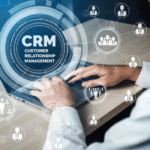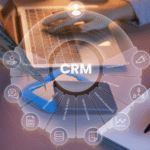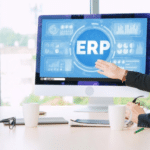In today’s fast-paced and highly competitive business environment, efficiency is crucial. One of the most effective ways to achieve operational efficiency is through the integration of an ERP (Enterprise Resource Planning) system. ERP system integration is the process of combining various software systems and applications within an organization into a unified platform. This article explores the importance of ERP system integration and how it helps streamline operations for businesses of all sizes.
I. Understanding ERP System Integration
A. Definition of ERP
ERP systems are comprehensive software platforms used to manage and automate core business processes across various departments, including finance, human resources, manufacturing, supply chain, and customer relationship management.
B. What Is ERP System Integration?
ERP system integration involves linking different software applications and databases within an organization to ensure seamless data flow and communication. This integration helps eliminate data silos, reduce redundancy, and improve overall efficiency.
II. Benefits of ERP System Integration
A. Improved Data Accuracy and Consistency
By integrating all business processes into a single system, ERP integration ensures that data is entered once and used across the organization. This reduces errors, increases data accuracy, and ensures consistency in information across all departments.
B. Enhanced Visibility and Reporting
Integrated ERP systems provide real-time visibility into business operations. With a centralized database, businesses can generate accurate and comprehensive reports, enabling better decision-making and strategic planning.
C. Increased Efficiency and Productivity
ERP system integration automates routine tasks and streamlines workflows. By reducing manual data entry and eliminating redundant processes, employees can focus on more value-added activities, leading to increased productivity and operational efficiency.
D. Better Collaboration and Communication
With integrated ERP systems, different departments can easily share information and collaborate on projects. This improved communication fosters teamwork and ensures that everyone is working towards the same organizational goals.
E. Cost Savings
ERP integration reduces IT costs by consolidating multiple systems into a single platform. It also minimizes the need for maintenance and support for various disparate systems, resulting in significant cost savings for the organization.
III. Key Components of ERP System Integration
A. Data Integration
Data integration involves consolidating data from various sources into a single, unified database. This ensures that all departments have access to the same accurate and up-to-date information.
B. Application Integration
Application integration connects different software applications used within an organization, enabling them to communicate and share data seamlessly. This can involve custom-built interfaces or middleware solutions.
C. Process Integration
Process integration focuses on streamlining business processes by automating workflows and ensuring that all processes are aligned and working together efficiently. This includes the integration of supply chain management, customer relationship management, and other critical processes.
D. Security Integration
Security integration ensures that data is protected across the integrated system. This involves implementing robust security measures such as encryption, access controls, and regular security audits to protect sensitive information.
IV. Challenges of ERP System Integration
A. Complexity and Cost
ERP system integration can be complex and costly, especially for large organizations with multiple legacy systems. It requires careful planning, a significant investment in technology and resources, and ongoing maintenance.
B. Change Management
Integrating ERP systems often involves significant changes to business processes and workflows. Effective change management strategies are essential to ensure that employees are trained and prepared for the transition.
C. Data Migration
Migrating data from existing systems to the new ERP platform can be challenging. Ensuring data accuracy, consistency, and completeness during the migration process is critical to the success of the integration.
V. Best Practices for Successful ERP System Integration
A. Conduct a Thorough Needs Assessment
Before starting the integration process, conduct a thorough assessment of your organization’s needs and requirements. Identify the key processes and systems that need to be integrated and prioritize them based on their impact on business operations.
B. Choose the Right ERP Solution
Select an ERP solution that aligns with your business needs and goals. Ensure that the ERP system is flexible and scalable, with robust integration capabilities to support future growth.
C. Develop a Detailed Integration Plan
Create a detailed integration plan that outlines the steps, timeline, and resources required for the integration process. Assign responsibilities and set clear milestones to track progress and ensure that the project stays on track.
D. Invest in Training and Support
Provide comprehensive training for employees to ensure that they understand how to use the integrated ERP system effectively. Offer ongoing support to address any issues or challenges that arise during and after the integration process.
E. Monitor and Optimize
Continuously monitor the performance of the integrated ERP system and gather feedback from users. Use this information to identify areas for improvement and optimize processes to maximize the benefits of the integration.
VI. Conclusion
ERP system integration is essential for streamlining operations and achieving efficiency in today’s competitive business environment. By improving data accuracy, enhancing visibility, increasing productivity, and fostering collaboration, ERP integration helps businesses operate more effectively and make informed decisions. While the integration process can be complex and challenging, following best practices and investing in the right tools and resources can lead to a successful implementation and significant long-term benefits.










